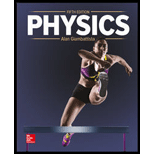
Concept explainers
The population of a culture of yeast cells is studied in the laboratory to see the effects of limited resources (food, space) on population growth, (a) Make a graph of the yeast population (measured as total mass of yeast cells) versus elapsed time. Draw a best-fit smooth curve, (b) After a long time, the population approaches a maximum known as the carrying capacity. Estimate the carrying capacity for this population, (c) When the population is much smaller than the carrying capacity, the growth is expected to be exponential: m(t) = m0ert, where m is the population at any time t, m0 is the initial population, r is the intrinsic growth rate (i.e., the growth rate in the absence of limits), and e is the base of natural logarithms (see Appendix A.3). To obtain a straight-line graph from this exponential relationship, we can plot the natural logarithm of m/m0.
Make a graph of In (m/m0) versus t from t = 0 to t = 6.0 h, and use it to estimate the intrinsic growth rate r for the yeast population.
Want to see the full answer?
Check out a sample textbook solution
Chapter 1 Solutions
Physics
- Calculate the approximate number of atoms in a bacterium. Assume the average mass of an atom in the bacterium is 10 times the mass of a proton.arrow_forwardRoughly how many floating-point operations can a supercomputer perform in a human lifetime?arrow_forwardIf the DNA strand in a molecule could be stretched out, it would have a length on the order of 2.0 m. What would this be in feet and inches?arrow_forward
- Find the order of magnitude of the number of table-tennis balls that would fit into a typical-size room (without being crushed). 18. (a) Compute the order of magnitude of the mass of a bath-arrow_forwardRoughly how many heartbeats are there in a lifetime?arrow_forwardBacteria and other prokaryotes are found deep underground, in water, and in the air. One micron (106 m) is a typical length scale associated with these microbes. (a) Estimate the total number of bacteria and other prokaryotes in the biosphere of the Earth. (b) Estimate the total mass of all such microbes. (c) Discuss the relative importance of humans and microbes to the ecology of planet Earth. Can Homo sapiens survive without them?arrow_forward
- A floating-point operation is a single arithmetic operation such as addition, subtraction, multiplication, division. (a) Estimate the maximum number of floating- point operations a human being could possibly perform in a lifetime. (b) How long would it take a supercomputer to perform that many floating-point operations?arrow_forwardRoughly how many times longer than the mean life of an extremely unstable atomic nucleus is the lifetime of a human?arrow_forwardAssume it takes 7.00 min to fill a 30.0-gal gasoline tank. (a) Calculate the rate at which the tank is filled in gallons per second. (b) Calculate the rate at which the tank is filled in cubic meters per second. (c) Determine the time interval, in hours, required to fill a 1.00-m3 volume at the same rate. (1 U.S. gal = 231 in.3)arrow_forward
- (a) Estimate the number of times your heart beats in a month, (b) Estimate the number of human heartbeats in an average lifetime.arrow_forwardAssuming one nerve impulse must end before another can begin, what is the maximum firing rate of a nerve in impulses pet second?arrow_forwardIf the population in a certain country was discovered to be increasing at a steady rate of 6 percent every decade, how many years would it take for the population of that nation to double in size?arrow_forward
 University Physics Volume 1PhysicsISBN:9781938168277Author:William Moebs, Samuel J. Ling, Jeff SannyPublisher:OpenStax - Rice University
University Physics Volume 1PhysicsISBN:9781938168277Author:William Moebs, Samuel J. Ling, Jeff SannyPublisher:OpenStax - Rice University College PhysicsPhysicsISBN:9781285737027Author:Raymond A. Serway, Chris VuillePublisher:Cengage Learning
College PhysicsPhysicsISBN:9781285737027Author:Raymond A. Serway, Chris VuillePublisher:Cengage Learning Principles of Physics: A Calculus-Based TextPhysicsISBN:9781133104261Author:Raymond A. Serway, John W. JewettPublisher:Cengage Learning
Principles of Physics: A Calculus-Based TextPhysicsISBN:9781133104261Author:Raymond A. Serway, John W. JewettPublisher:Cengage Learning Physics for Scientists and Engineers with Modern ...PhysicsISBN:9781337553292Author:Raymond A. Serway, John W. JewettPublisher:Cengage Learning
Physics for Scientists and Engineers with Modern ...PhysicsISBN:9781337553292Author:Raymond A. Serway, John W. JewettPublisher:Cengage Learning Physics for Scientists and EngineersPhysicsISBN:9781337553278Author:Raymond A. Serway, John W. JewettPublisher:Cengage Learning
Physics for Scientists and EngineersPhysicsISBN:9781337553278Author:Raymond A. Serway, John W. JewettPublisher:Cengage Learning





